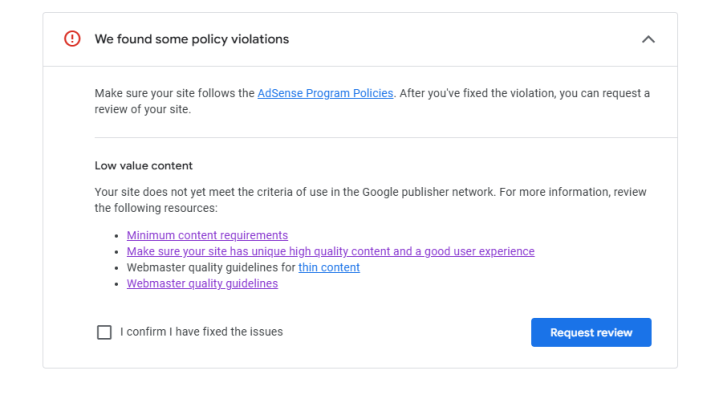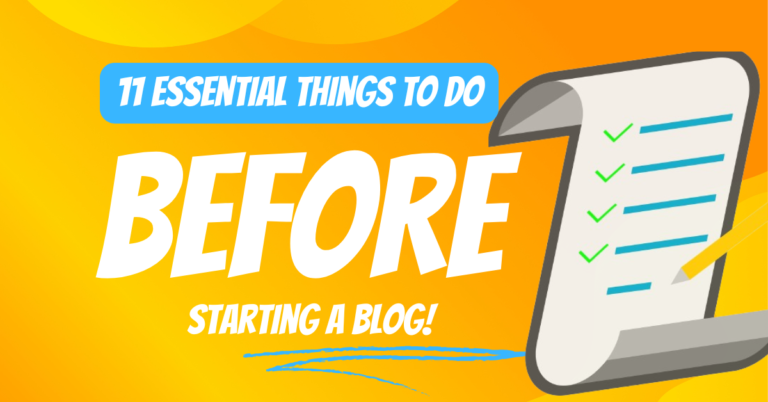Starting a blog as a student might seem daunting, but it’s one of the best decisions you can make.
Blogging can help you achieve goals such as expressing your thoughts, building an online presence, or earning extra cash.
When I first decided to start a blog as a student, I faced the daunting task of balancing my studies and my growing interest in writing. I sought a creative outlet to share my ideas, learn new skills, and make extra cash.
It was a challenging journey, but the sense of accomplishment I felt when I overcame these initial hurdles was genuinely inspiring. I realized that blogging could be the perfect solution, and it’s a decision I’ve never regretted.
My journey from a student with a budding interest in writing to a successful blogger was challenging. I spent countless hours researching, experimenting, and learning from my mistakes. But the most rewarding part of this journey was my blog’s sense of community and global connection.
What started as a small project in my college dorm room has now become a platform that showcases my skills and connects me with people from all over the world.
Starting a blog as a student can seem overwhelming, but with the proper guidance, it’s entirely doable.
In this guide, I’ll share everything I’ve learned about blogging for students. Whether you’re passionate about writing, tech, fashion, or food, this step-by-step guide will help you turn your interests into a successful blog.
By this end, you’ll have a clear roadmap to kickstart your blogging journey confidently.
Contents
- 1 Why Start a Blog as a Student?
- 2 How to Start a Blog as a Student: A Step-by-Step Guide
- 3 Final Thoughts
- 4 FAQ Section: Starting a Student Blog
- 4.0.0.1 1. How do I choose the right blogging platform for my student blog?
- 4.0.0.2 2. What are the best strategies for monetizing a student blog through affiliate marketing and ad revenue?
- 4.0.0.3 3. What are some practical ways to build and engage a community around my student blog?
- 4.0.0.4 4. How often should I post on my blog?
- 4.0.0.5 5. Can I balance blogging with my studies?
- 4.0.0.6 6. How can I drive traffic to my student blog?
- 4.0.0.7 7. How can I balance creating content with a busy student schedule?
- 4.0.0.8 8. Do I need to invest money in my student blog?
- 4.0.0.9 9. How long does it take to see success with a student blog?
- 4.0.0.10 10. What should I blog about as a student?
- 4.0.0.11 11. How do I handle copyright issues when blogging as a student?
- 4.0.0.12 12. Is it essential to have a niche for my student blog?
- 4.0.0.13 13. Can I blog anonymously as a student?
Why Start a Blog as a Student?
Before diving into the nitty-gritty of blogging for students, let’s talk about why you should even consider it in the first place.
Skill Development
One of the most significant advantages of blogging is that it helps you develop valuable skills. When you start a blog, you’ll naturally improve your writing, research, and communication skills. You’ll also get a head start on understanding basic SEO (Search Engine Optimization) and digital marketing concepts. These are highly sought-after skills in today’s job market, and having them on your resume can give you a competitive edge.
Building an Online Portfolio
Your blog can also serve as a digital portfolio where you showcase your work. Whether it’s essays, projects, or creative writing, your blog is a platform to share your talents with the world.
This can be incredibly useful when applying for jobs, internships, or even scholarships, as it demonstrates your initiative and expertise in your chosen field. A well-maintained blog can also help you build a personal brand, making you more recognizable digitally.
Potential for Income
Let’s remember the financial benefits of blogging for students. Many students successfully turn their blogs into income-generating platforms through affiliate marketing, sponsored posts, and ad revenue. While it may not make you rich overnight, the extra income can help cover tuition and books to give you some extra spending money.
Learn more >> the Benefits of Blogging for Students

How to Start a Blog as a Student: A Step-by-Step Guide
Step 1: Choose the Right Niche for Student Bloggers
The first step in starting a blog is choosing a niche. Your niche is the specific focus or topic area of your blog. It’s essential to pick something you’re passionate about because blogging requires a lot of time and effort. Writing about something you love makes the process enjoyable rather than a chore.
Identify Your Interests and Strengths
Choosing a niche for your blog is a crucial step, and it’s important to pick something that aligns with your passions and strengths. Start by making a list of your interests and strengths.
What subjects do you enjoy studying?
What hobbies do you have?
Your niche should align with your passions and expertise. This is not just about finding a topic to write about but creating a platform that excites you and makes you confident about your blog’s potential.
For example, if you’re a tech enthusiast, start a blog about the latest gadgets or software reviews. If you love cooking, a blog about student-friendly recipes could be your thing.
Research Your Audience and Competition
Once you’ve narrowed your interests, it’s time to research. Who is your target audience? Are there other blogs in your chosen niche?
Understanding your audience’s needs and the competition will help you discover a unique angle. The goal is to find a niche specific enough to stand out but broad enough to give you plenty of topics to write about.
Importance of a Niche in Blogging for Students
A focused niche is crucial because it helps you attract the right readers. When people know what to expect from your blog, they will likely stick around and become regular visitors. This is particularly important in blogging for students, where your readers are likely looking for specific information or advice.
Learn More>> How to Choose the Right Niche for Student Bloggers
Step 2: Set Up Your Blog
With your niche, it’s time to set up your blog. This involves choosing a blogging platform, picking a domain name, and setting up hosting.
Choosing a Blogging Platform
The first decision you must make is which blogging platform to use. There are several popular options out there, but here’s a quick overview of the most common ones:
- WordPress: The most popular blogging platform, known for its flexibility and extensive range of plugins. WordPress is an excellent choice if you’re serious about blogging and want a platform to grow with you.
- Blogger: A free, user-friendly platform that’s perfect for beginners. It’s easy to set up and manage, but it has limited customization options compared to WordPress.
- Wix: Known for its sleek, professional-looking templates, Wix is ideal for creating a visually appealing blog without much hassle.
Picking a Domain Name and Hosting
Your domain name is your blog’s online address (e.g., www.yourblogname.com). Choosing a name that reflects your blog’s identity and is easy to remember is essential. Here are a few tips:
- Keep it short and straightforward.
- Avoid using numbers or hyphens.
- Make sure it’s easy to spell.
After choosing a domain name, the next step is setting up hosting. Hosting is where your blog’s files are stored, making it accessible online. Many hosting providers offer affordable plans specifically designed for beginners. Popular hosting options include Bluehost, SiteGround, and HostGator.

Designing Your Blog
Now that your blog is set up, it’s time to design it. Your blog’s theme determines its look and feel, so choosing one that reflects your style and niche is essential. Most blogging platforms offer a variety of free and premium themes. Here are a few design tips:
- Choose a clean, straightforward design that’s easy to navigate.
- Ensure your blog is mobile-friendly, as many readers will access it on their phones.
- Use colors and fonts that are easy on the eyes.
Learn more>> 10 Blog Topics and Ideas for Students to Get Started
Step 3: Create Quality Content
Content is the lifeblood of your blog. The more valuable and engaging your content, the more likely you are to attract and retain readers.

Planning Your Content
Before diving into writing, consider creating an editorial calendar. This schedule outlines what topics you’ll cover and when you’ll publish them. A plan will help you stay consistent, which is key to building an audience.
Writing Your First Blog Post
Your first blog post is a big deal! It sets the tone for your entire blog, so take your time to craft something you’re proud of. Here’s a simple structure to follow:
- Introduction: Start with a hook that grabs your reader’s attention. Introduce the topic and explain why it’s relevant.
- Body: Break down your main points into sections, using subheadings to simplify the content. Include personal anecdotes or examples to make your post more relatable.
- Conclusion: Summarize your main points and include a Call to Action (CTA), encouraging readers to leave a comment, share your post, or subscribe to your blog.
Remember to optimize your post for SEO. Use relevant keywords, such as “how to start a blog as a student” and “blogging for students,” naturally throughout the post. Also, make sure your meta description is clear and compelling, as this is what will appear in search engine results.
Content Types to Consider
Depending on your niche and audience, you can create many different types of content. Here are a few ideas:
- How-to guides: Step-by-step tutorials that teach your readers how to do something.
- Listicles: List tips, resources, or ideas related to your niche.
- Personal stories: Share your experiences and insights on a particular topic.
- Reviews: Provide honest reviews of products, books, or services relevant to your niche.
Consider incorporating multimedia elements like images, videos, or infographics to make your content more engaging. This breaks up the text and makes your posts more visually appealing.
Learn more>> The Importance of Blogging for Students
Step 4: Promote Your Student Blog
Creating great content is just the beginning. To build an audience, you need to promote your blog actively.

Leveraging Social Media
Social media is one of the most effective ways to promote your blog and connect with your audience. Platforms like Instagram, Twitter, and Facebook are perfect for sharing your posts and engaging with readers. Consider these tips:
- Share your blog posts on all your social media accounts.
- Use relevant hashtags to increase your reach.
- Join student blogging communities and participate in discussions.
Networking with Other Bloggers
Networking is another powerful way to grow your blog. By connecting with other bloggers in your niche, you can learn from their experiences, collaborate on projects, and even get your content in front of a broader audience. Consider guest posting on other blogs or inviting other bloggers to write for yours.
Utilizing SEO for Traffic
SEO is crucial for your blog to be found in search engines. Here are a few basic SEO strategies to get you started:
- Keyword optimization: Include relevant keywords, such as “how to start a blog as a student” and “blogging for students,” naturally in your posts.
- Internal linking: Link to other relevant posts on your blog to keep readers on your site longer.
- Backlinks: Get other websites to link to your blog, which can boost your search engine rankings.
Learn more >> Examples of Successful Blogs by Students
Step 5: Monetize Your Blog
Once your blog has a solid content base and a steady traffic flow, you can explore monetization options.

Exploring Income Streams
There are several ways to make money from your blog, including:
- Affiliate marketing: Earn a commission by promoting products or services on your blog.
- Sponsored posts: Partner with brands to create content that promotes their products or services.
- Ad networks: Display ads on your blog and earn money based on clicks or impressions.
While it might take some time to start seeing significant income, the potential is there, especially if you’re consistent and strategic.
Balancing Blogging and Studies
As a student, finding a balance between blogging and your academic responsibilities is essential. Here are a few tips:
- Set realistic goals: Try to do only a little at a time. Start with one or two posts weekly and gradually increase your output as you get more comfortable.
- Prioritize your studies: Remember, your education comes first. Use your blog as a creative outlet, but don’t let it interfere with your schoolwork.
- Stay organized: Use tools like Trello or Google Calendar to keep track of your blog tasks and deadlines.
Learn more>> The Benefits of Blogging for Students
Final Thoughts
Starting a blog as a student is achievable and incredibly rewarding. Whether you’re passionate about sharing your ideas, building a personal brand, or exploring ways to earn some extra cash, this guide has shown you the essential steps to starting a blog as a student.
Remember, the key to success in blogging for students is consistency, choosing a niche you love, and staying patient as you grow your audience.
Don’t worry if it feels overwhelming initially—every successful blogger started where you are now. Use your blog to showcase your skills, connect with others, and enhance your resume with digital marketing and SEO expertise.
As a student, you have a unique perspective, and your voice deserves to be heard. So take that first step and see where your blogging journey leads you. Trust me, you’ll be glad you did! Happy blogging!
If you found this guide helpful, please check out the other articles in this series, such as 10 Blog Topics and Ideas for Students to Get Started and Examples of Successful Blogs by Students. Happy blogging!
FAQ Section: Starting a Student Blog
1. How do I choose the right blogging platform for my student blog?
Choose a platform based on your needs. For beginners, WordPress.com and Blogger are great free options with easy setup. For more control, WordPress.org is ideal, but it requires hosting.
2. What are the best strategies for monetizing a student blog through affiliate marketing and ad revenue?
Focus on promoting relevant products to your audience through affiliate programs like Amazon Associates. For ad revenue, Google AdSense and Media.net can generate passive income as your traffic grows.
3. What are some practical ways to build and engage a community around my student blog?
Create valuable content that addresses your audience’s needs, interact through social media, and respond to comments. Hosting webinars, creating polls, and offering newsletters can help keep your readers engaged.
4. How often should I post on my blog?
Consistency is key. Aim for 1–3 weekly posts to maintain engagement without overwhelming your audience or sacrificing quality.
5. Can I balance blogging with my studies?
Yes! Create a content calendar to manage your time effectively, and focus on writing during your free periods or weekends.
6. How can I drive traffic to my student blog?
Focus on SEO by optimizing your posts with relevant keywords. Share content on social media, engage in online forums related to your niche, and consider guest posting on other blogs.
7. How can I balance creating content with a busy student schedule?
Plan using a content calendar. Break tasks into smaller chunks, such as writing in short bursts or outlining posts during breaks. Prioritize time management by setting aside specific hours for blogging.
8. Do I need to invest money in my student blog?
It depends on your goals. Free platforms like WordPress.com allow you to start at no cost, but investing in a domain name, hosting, and premium themes or tools can make your blog more professional and scalable in the long run.
9. How long does it take to see success with a student blog?
Success varies, but it typically takes 6-12 months of consistent posting, SEO work, and promotion to build a steady readership and start earning through monetization strategies like affiliate marketing or ads.
10. What should I blog about as a student?
Choose topics you’re passionate about, or that align with your studies. Popular niches for student blogs include study tips, lifestyle, travel, personal finance, and career advice.
11. How do I handle copyright issues when blogging as a student?
Always use original content or adequately credit sources. You can use free images from websites like Unsplash or Pexels but don’t plagiarize written content from others.
12. Is it essential to have a niche for my student blog?
Yes, having a niche helps you attract a dedicated audience and create content tailored to their interests. It’s easier to grow a blog with a focused niche than one covering too many unrelated topics.
13. Can I blog anonymously as a student?
Absolutely! Many bloggers prefer anonymity. You can use a pseudonym, avoid showing your face, and keep personal information private while growing an audience.







